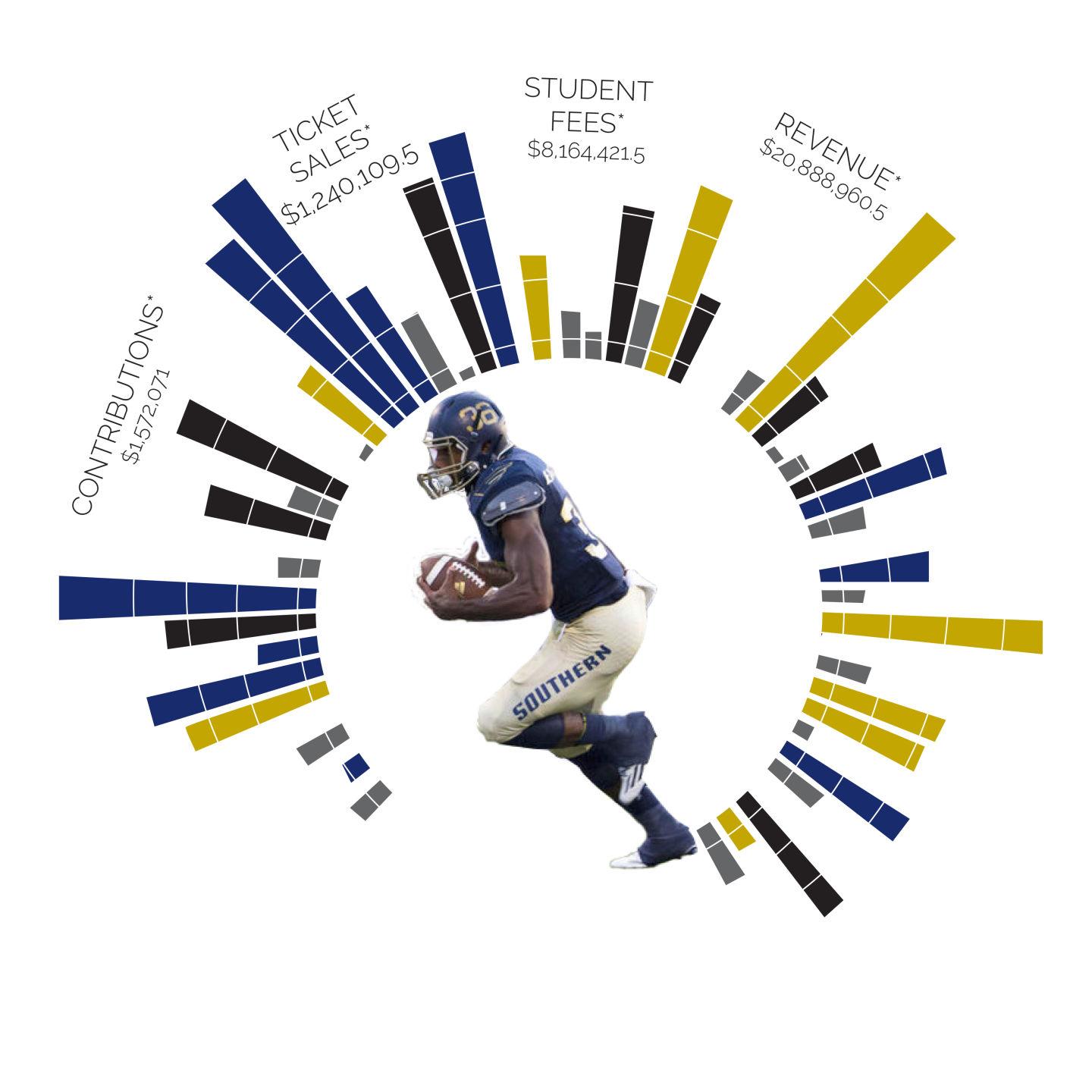Feed the beast: Breaking down GS Athletic budget
September 5, 2017
Athletics are a time honored tradition for many colleges and universities, maybe none so more than for schools in the south. Sports can be a source of pride, camaraderie and community for students and athletics can provide a an avenue for student-athletes to excel on the field and in class.
For all of the benefits athletics brings however, there are also a host of costs associated with them as well, after all running an entire athletics department certainly isn’t cheap.
In the 2015 – 2016 academic year out of 230 Division I NCAA athletic departments, over 70 reported a net loss of revenue, while many other universities struggled to break even, according to data collected by USA Today.
Schools as large and popular as Florida State University, the University of Iowa and the University of Washington post impressive amounts revenue, but all suffered fiscal losses according to the same USA Today report.
We took a look at GS’ Athletic Department over the past four years to help break down everything from ticket sales and donations, to athletic fees and student scholarships.
Student Fees
One of the biggest cornerstones of the Athletic Department’s revenue are the fees they collect from students every year.
According to documents obtained from the GS Records Department, GS collected over $9.5 million in student fees allocated strictly for athletics in the 2016 Fiscal Year (FY).
GS collected an average of $8 million in students fees each year since 2013, with the largest jump occurring between the 2013 FY and 2014 FY from $5,182,013 to $9,542,787 respectively, an increase of 54 percent.
While enrollment only increased from 15,749 to 15,762 between the two years, it was also the year GS left the Southern Conference and entered the Sun Belt, a notably more prominent conference.
While GS did make a profit from the athletics department for three of the past four years, a sizeable chunk of the reported revenue came from student fees and contributions.
Since 2013, student fees and contributions made up an average of 49.7 percent of all revenue reported by the athletic department.
Contributions & Ticket Sales
Contributions are defined in the budget reports as any of the following: Amounts received from individuals, corporations, associations, foundations, clubs or other organizations designated for the operations of the athletics program, funds contributed by outside contributors for the payment of debt service, lease payments or rental fee expenses for athletic facilities in the reporting year or amounts received above face value for tickets.
To many it may be no surprise that these contributions are a large part of many athletic departments, and GS has benefited from some rather robust donations over the years.
Over the past 4 years GS has managed to obtain over $1.5 million in contributions, receiving $3,665,255 in the 2016 FY, nearly triple the second highest contribution, $1,029,174 in 2013 FY.
Since 2013, GS has averaged over $1.2 million in ticket sales across all sports, with football and men’s basketball leading the category each year.
Another sizable revenue stream includes Direct Institutional Support, a category that covers a wide array of monetary sources, including, but not limited to tuition, state funds and endowments. These funds are allocated to athletics as the university sees fit.
Scholarships
Many student-athletes are dependent on receiving financial aid from the university in order to attend school and excel both on the field and in the classroom. Universities around the country dole out millions of dollars in financial aid for student-athletes and GS is no different.
GS, on average, has allocated over two million dollars per year in athletic scholarships since 2013 according to documents obtained from GS.
Despite there being more female athletic teams than male over the past four years, the total amount of male athletic scholarship dollars allocated have been consistently higher than the total female amount.
The disparity was at its highest in 2014, when the total amount of money allocated to male athletic scholarships exceeded the total female amount by nearly 43 percent. With the gap being at its lowest in 2015, with only a 28 percent difference.
The single that receives the most aid was football, which averaged $1,733,735 in athletic scholarships over the past 4 years. Football made up nearly 64 percent of the entirety of male athletic aid awarded since 2013, on average according to documents obtained from the university.
Compared to the other teams of the Sun Belt GS is relatively well off. GS sits near the top of the list, beating out schools such as Appalachian State University, Georgia State University and Arkansas State University USA Today reports.
While not pulling in the most revenue in the 2015-16 season, GS is the second most profitable team in the conference, bested only by Texas State, who pulled in nearly three million dollars in profit in 2015 according to the USA Today report.









